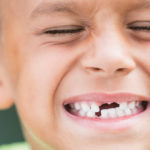When treating a wound, it’s vital to take the steps necessary to prevent further infection. Below are a few tips to keep in mind:
- Applying antibiotic spray or ointment is a must. Anytime you see broken skin, there is risk of infection and infections can lead to further complications. Using a quality antibiotic ointment or spray along with an aerosol wound wash is the best defense. Click here to shop MacGill’s selection of wound wash and antibiotic ointments.
- Topical antibiotics accelerate healing. They can also help prevent infections caused by bacteria that get into minor cuts, scrapes and If wounds are left untreated, bacteria will multiply, causing pain, redness, swelling, itching and oozing. Untreated infections can eventually spread and become much more serious.
- Choosing the right antibiotic is essential. Different kinds of topical antibiotics kill different kinds of bacteria. Click here for information on the differences between Neosporin and Bacitracin.
- Determine whether you should cover the wound or not. While the common assumption is to let a wound breathe to help it heal faster, that might not always be the best solution. When a wound is covered, the blood vessels are able to heal faster. Click here for more information.
- Know when to call a doctor. Using an antibiotic ointment or spray is a must for minor scrapes, cuts, and burns, but make sure you know when a wound needs more serious treatment.
- Signs of infection include redness, swelling, hot-to-the-touch, pus, white or yellow drainage, sever tenderness, or fever.
- According to Mayo Clinic, a doctor is also needed when there are:
- large wounds or burns any larger than a few inches in diameter
- deep cuts or puncture wounds
- cuts that continue bleeding may need stitches
- scrapes imbedded with particles that will not wash away
- animal bites
- eye injuries
Click here to browse MacGill’s infection protection products. If you have any questions, please contact us.





